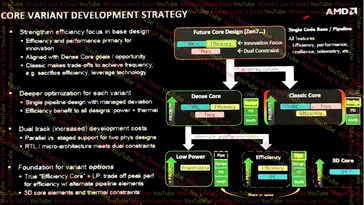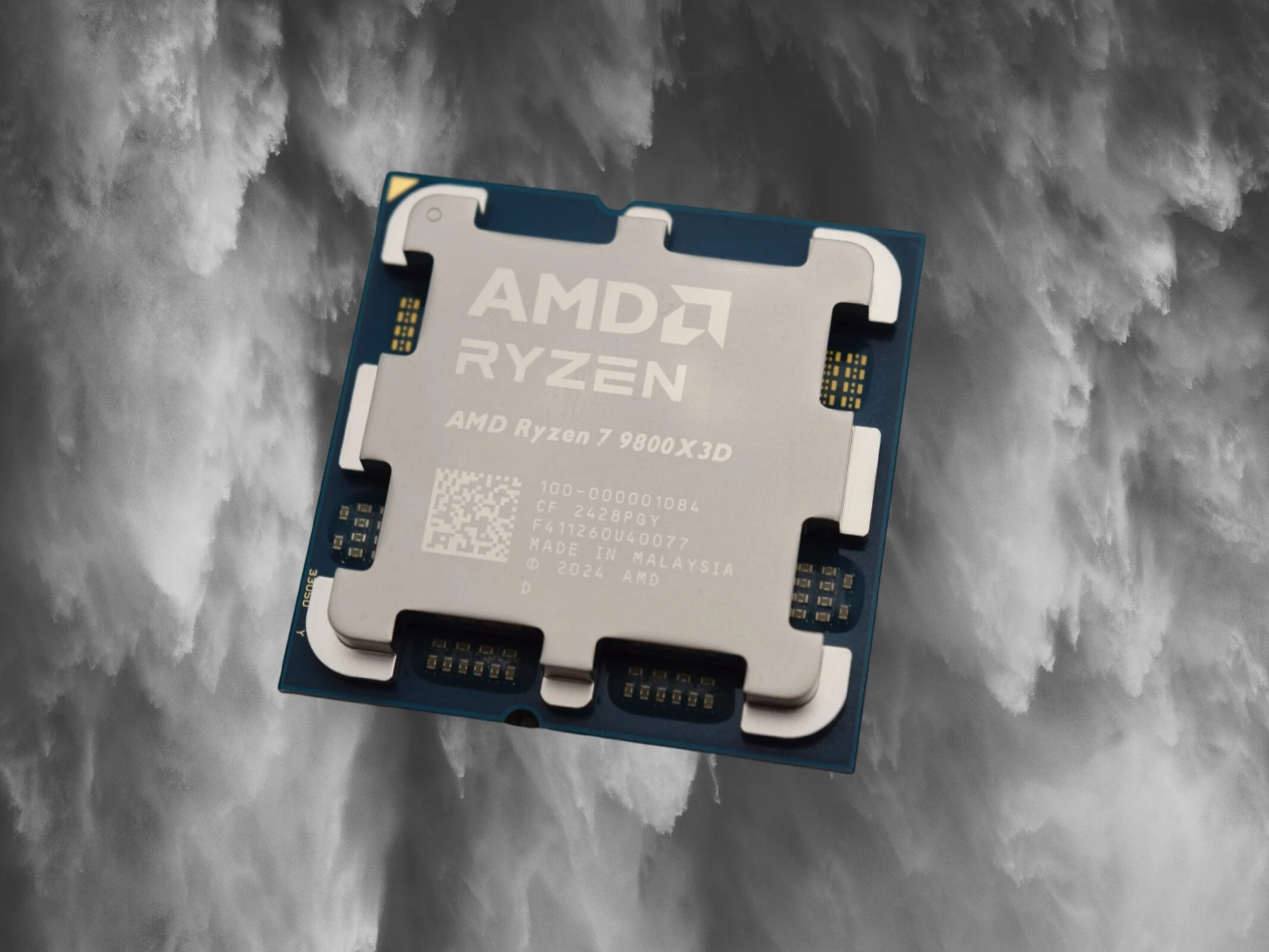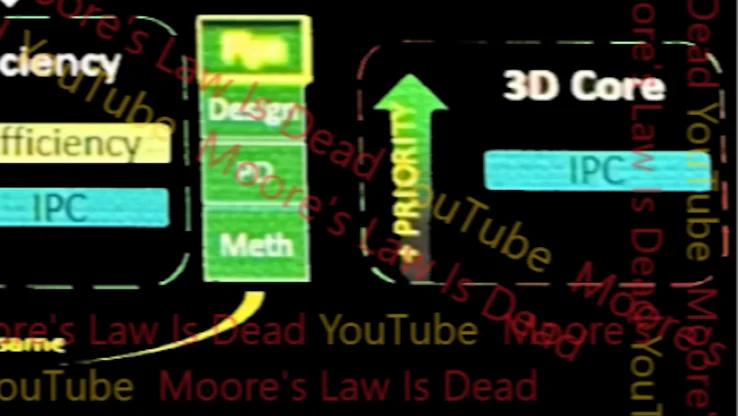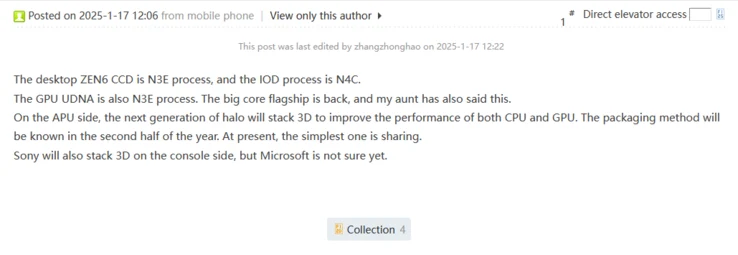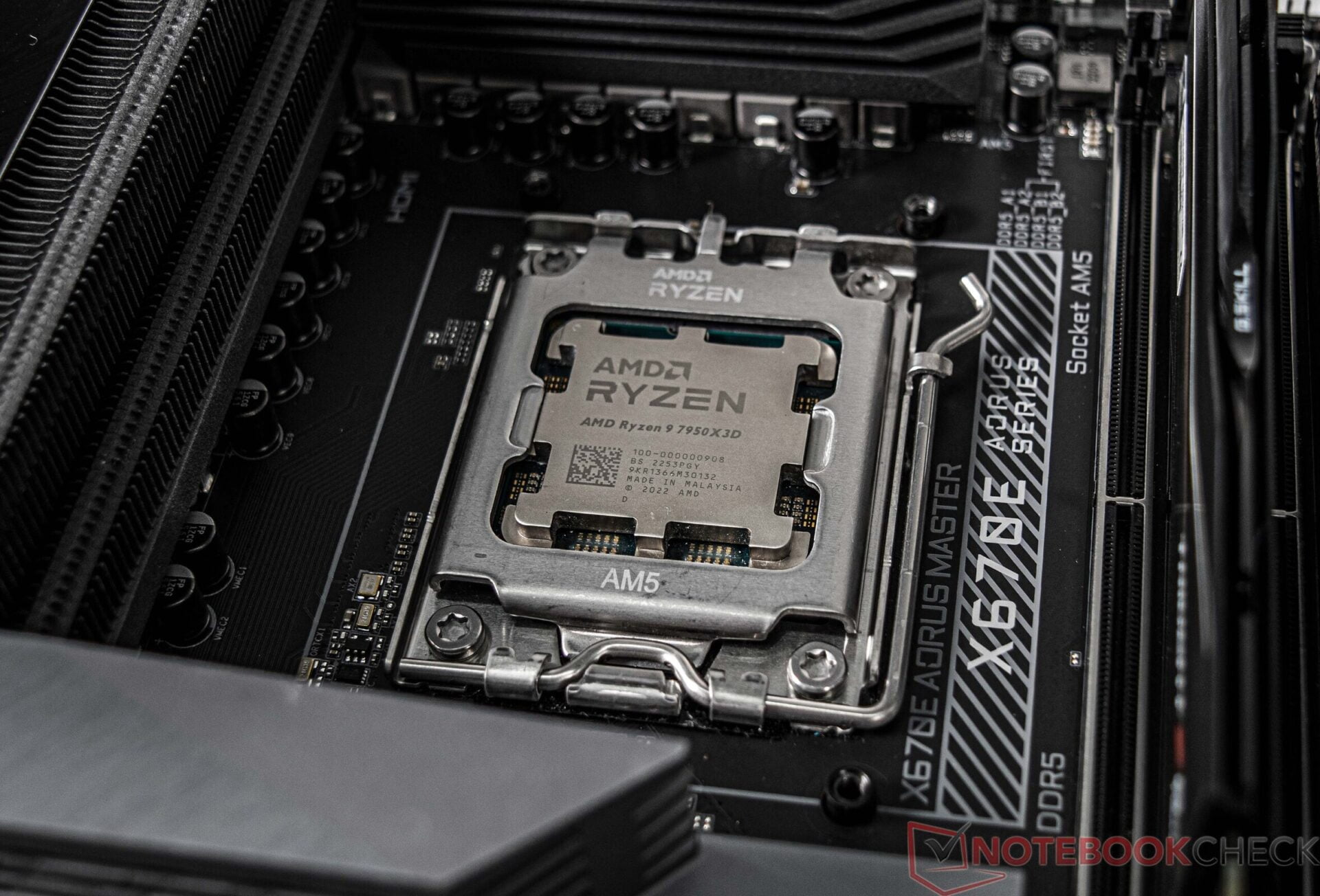Key Takeaways
1. AMD’s Zen 7 CPU architecture is expected to focus on enhancing efficiency, IPC (Instructions Per Cycle), and frequency, rather than significantly increasing core count compared to Zen 6.
2. The introduction of a 3D Core is a key feature of Zen 7, utilizing advanced TSMC process nodes (1.4 nm for core chiplets and 4 nm for V-Cache chiplets).
3. Zen 7 is anticipated to achieve a 15-25% IPC improvement over Zen 6, with each core featuring 2 MB of on-die L2 cache and 7 MB of L3 cache, extending the 3D V-Cache concept.
4. AMD’s Epyc Zen 7 server processors may include 33-core chiplets, potentially allowing for total core counts of up to 264, with backward compatibility to Zen 6 IODs.
5. The projected timeline for Zen 7 includes a “Tape Out” in October 2026, with a full launch expected by late 2027 or early 2028.
By all accounts, it seems we still have over a year to wait before AMD reveals its next-generation Zen 6 CPU architecture. However, this hasn’t deterred Moore’s Law Is Dead from providing some insights about Zen 7, the successor to Zen 6. Recently, we reported that AMD has significant ambitions for Zen 7, including the launch of a 3D Core.
Insights on Zen 7
Moore’s Law Is Dead has shared more details about Zen 7 and AMD’s innovative 3D Cores. The source suggests that while Zen 7 may not significantly increase the core count compared to Zen 6, AMD plans to enhance efficiency, IPC, and frequency across all core types. Currently, AMD is said to be developing a single Zen 7 CPU architecture and dividing it into five distinct variants.
Exciting Developments
While MLID outlines some of AMD’s architectural and design objectives for Zen 7, the most intriguing aspect is the rumored 3D Core. Based on internal documents allegedly seen by MLID and confirmed through an AMD insider, AMD is reportedly choosing the advanced TSMC 1.4 nm process node for Zen 7 core chiplets and a 4 nm process for V-Cache chiplets. Even though this approach may raise costs, AMD appears committed to using the latest TSMC process node for its CPU cores.
Performance Expectations
With this cutting-edge process, Zen 7 is expected to achieve a 15-25% IPC improvement over Zen 6. This increase in IPC may be influenced by the cache modifications that AMD plans to implement in Zen 7 CPUs. The leaker indicates that Zen 7 processors will come with 2 MB of on-die L2 cache per core and 7 MB of L3 cache per core, utilizing V-Cache chiplets. This effectively means that AMD is extending the 3D V-Cache concept it first introduced with the Ryzen 7 5800X3D, giving each Zen 7 CPU core its own V-Cache, thus coining the term “3D Core.”
If AMD successfully launches a 3D Core, it’s easy to imagine that Zen 7 CPUs could deliver outstanding gaming performance, especially since the leading gaming CPUs available today are AMD models featuring a dedicated L3 “3D V-Cache” component.
Server Chip Developments
Furthermore, MLID asserts that AMD’s Epyc Zen 7 server processors will incorporate 33-core chiplets, potentially leading to a total core count of up to 264. Additionally, it seems that the Zen 7 Epyc core chiplets will be backward compatible with Zen 6 IODs, which AMD plans to unveil next year.
MLID mentions that AMD’s current goal for the “Tape Out” of Zen 7 is set for October 2026. Team Red is reportedly aiming for a full launch by the end of 2027 or the beginning of 2028.
Finally, the fact that Zen 7 is more than two years away suggests that the information provided by MLID should be taken with caution. We will likely hear official confirmations about Zen 7 only once Zen 6 CPUs are available on the market.
Source:
Link

